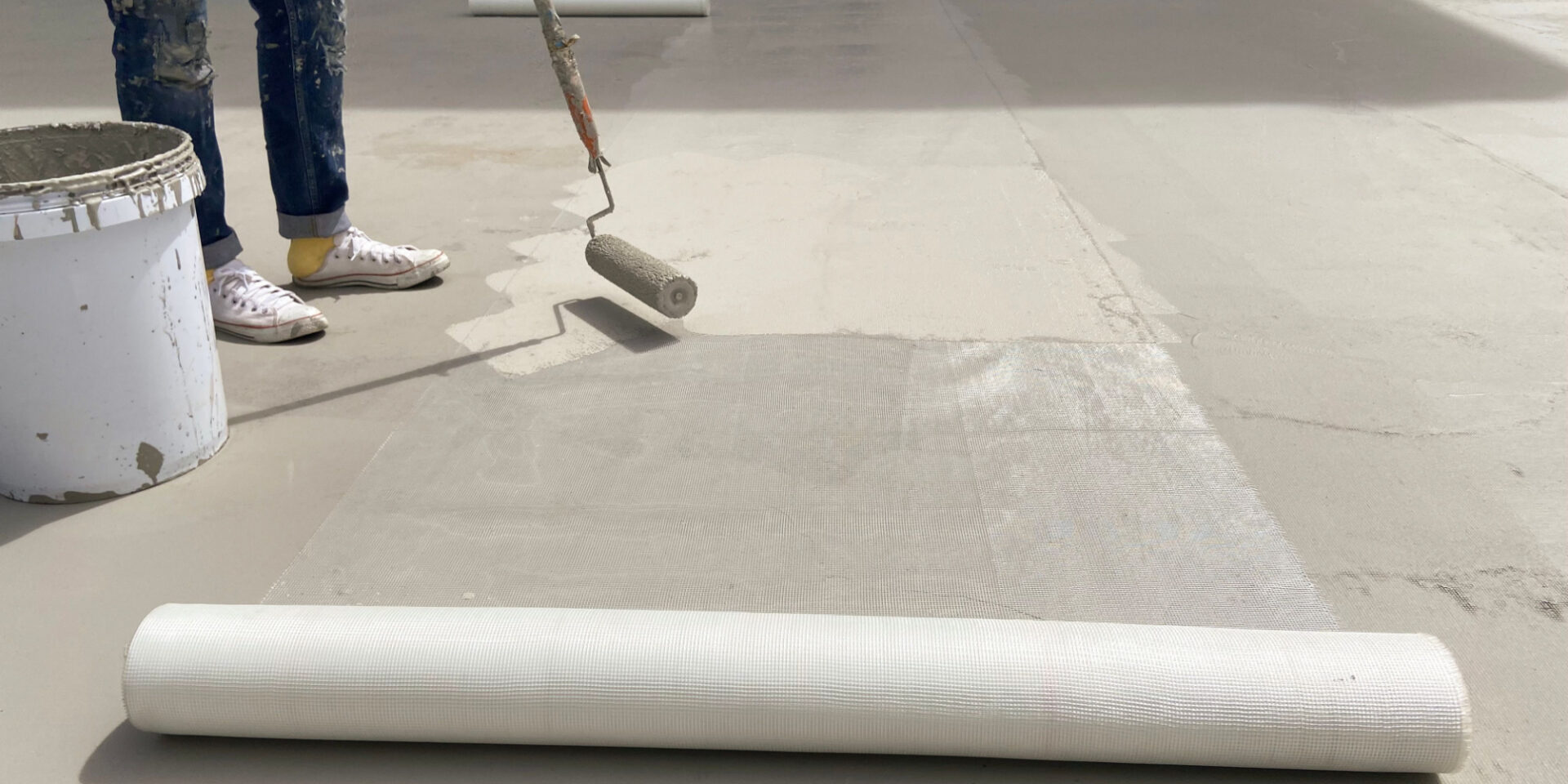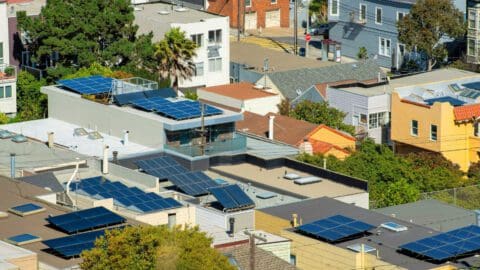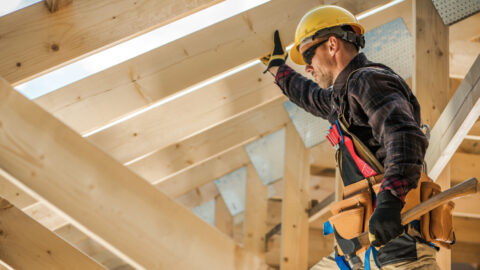Across both residential and commercial properties, flat roofs are popular across Florida. As a result, so are rubber roofs. But when comparing rubberized roofs to other flat roofing options like modified bitumen and built-up roofing, homeowners have a lot of questions about how roofing membranes compare.
Luckily, we have answers! Keep reading to see what the expert roofers from John Hogan Roofing have to say about rubber roof costs, durability, and more!
What Are the Types of Rubber Roofing Materials?

In Florida, two types of rubber roofs stand head and shoulders above the rest: TPO and EPDM. To help give you an idea of how rubber roofing materials function, let’s start by talking a bit more about TPO.
Thermoplastic polyolefin, or TPO, is a single-ply roofing membrane. This means it’s rolled across the length of your roof and then heat-adhered to create a water-tight barrier. In the event of water being trapped on your roof, this protection will stop the water from penetrating your roof and causing leaks. As an added bonus, since TPO is usually white, it helps reflect heat away from your building!
EPDM, ethylene propylene diene monomer, works similarly, but with notable differences. For one, it’s adhered using seam tape and other adhesives. Moreover, since EPDM is usually black, it tends to absorb heat rather than reflect it away from the structure.
But in both cases, a rubberized roofing material creates an impenetrable barrier against water. This is perfect for flat roofs, which can easily retain water (especially when not installed correctly). So by having a rubber roof on your home or business, you can tailor your structure’s protection to its specific needs.
Now that you have a general understanding of what rubber roofs are and how they work, we can discuss rubber roofing costs, advantages, and drawbacks!
Rubber Roof Costs, Lifespans, and Durability
Let’s take a deep dive into rubber roofing in Florida! To start, let’s examine the subject that everyone has questions about: the cost of rubber roofing.
Rubber Roofing Costs
Even the most affordable roof replacements cost many thousands of dollars, but how much does rubber roofing cost? The specifics of roofing costs always vary based on unique roofing features, like square footage and roof accessibility. But in general, TPO roofs cost between $10 and $20 per square foot, while EPDM costs between $12 and $26.
As you can see, TPO is slightly more expensive. But why the price difference? Let’s look at how these rubber roofing materials perform to get a better understanding of why EPDM costs a bit more than TPO.
Rubber Roofing Lifespans
Naturally, how long your rubber roof lasts will have a big impact on the total cost. And there is a considerable gap in the durability of TPO vs EPDM, although both can offer great protection. On average, TPO roofs last between 10 and 25 years in Florida. EPDM roofs, on the other hand, last around 40 to 50 years.
While this might make TPO seem like a bad rubber roofing material, the truth is that 10 to 25 years of life for a flat roof in Florida isn’t bad at all. For comparison, modified bitumen lasts for about 20 years and is more expensive than TPO.
But still, it seems odd that TPO would have half the lifespan of TPO and be so close in price. Why is that?
Rubber Roofing Durability
When looking at the durability of rubber roofs, both TPO and EPDM have a lot to offer. But when it comes to withstanding Florida’s unpredictable weather, TPO does have some unique advantages.
As mentioned, the white of TPO helps reflect heat away and keep your structure cool. Additionally, since TPO is heat-welded to your roof, it is likely to stay impenetrable throughout its lifetime. On the other hand, while EPDM roofs use great adhesives, they can break down with time, especially in the unforgiving Florida sun. For this reason, it’s not unusual for older EPDM roofs to need repairs to keep them functional throughout their lives.
Finally, TPO can expand and contract with the heat of the sun, whereas EPDM tends to break rather than contract. This can lead to premature aging for EPDM roofs in Florida, although it’s also true that their more resilient material components mean they will still, on average, last longer than TPO roofs.
Downsides of TPO and EPDM Roofs

While rubber roofs have a lot of strengths, they aren’t perfect. To give you a full picture of rubberized roofing materials, let’s talk about some of their less flattering features.
For one thing, rubber roofs are vulnerable to impact damage from storm debris like falling branches. Because while rubber does a fantastic job at keeping water out, it can easily be punctured by something falling on your roof, especially something sharp.
Rubber roofs (and flat roofing in general) are also more complex to install than asphalt shingles. This isn’t a problem for experienced roofers, but it can create issues if you use unreliable contractors. Because while they might say they can install rubber roofs to get your business, they may not actually know how to safely install a rubber roof. And if they make a mistake, you could be paying for it for years in persistent roofing problems.
Choose Florida’s Best Flat Roofing Professionals
John Hogan Roofing has been Florida’s top roofing company for over 30 years. We know all about rubber roofs, and when you choose us for your flat roof replacement, you can do so knowing that we’ll deliver on quality workmanship and professionalism. If you don’t believe us, just check out our reviews!
Are you interested in getting a new rubber roof for your home or business? Reach out to the friendly staff at John Hogan. We make it easy to get your free roof replacement estimate so that you can make an informed choice on your new roof. This estimate will include details on every part of your new roofing system and give you a clear price with no hidden fees or other nasty surprises!
When you’re ready to take the next steps on getting a new rubber roof in Florida, our crew is ready to help. Reach out and see why we’ve been Florida’s top rubber roofing professionals for over three decades!
HAVE THE WORK COMPLETED RIGHT THE FIRST TIME
You May Also Like:
A Homeowner’s Guide to the Florida PACE Program for Roof Replacement
In Florida, a strong, reliable roof isn’t a luxury—it’s a necessity. But with the high cost of replacement, many homeowners are forced to delay this critical work, putting their homes at risk. While options like home equity loans or personal loans exist, there is another powerful financing tool designed specifically for Florida homeowners: the PACE…
Read MoreBenefits of Integrating Solar Panels with Your Roof in Florida
In the Sunshine State, it’s no secret that the sun shines bright nearly all year long. Florida is not only a paradise for beach lovers but also an ideal location for harnessing solar energy. If you’re a homeowner in Florida, you’ve probably considered integrating solar panels into your home, especially as the state continues to…
Read More15 Crucial Questions to Ask Before Hiring a Roofing Contractor in Florida
15 Crucial Questions to Ask Before Hiring a Roofing Contractor in Florida (And Why They Matter) In Florida, where hurricanes, heavy rain, and intense sunshine are part of everyday life, your roof is more than just a cover — it’s your home’s first line of defense. So, when it comes time for a roof repair…
Read More



